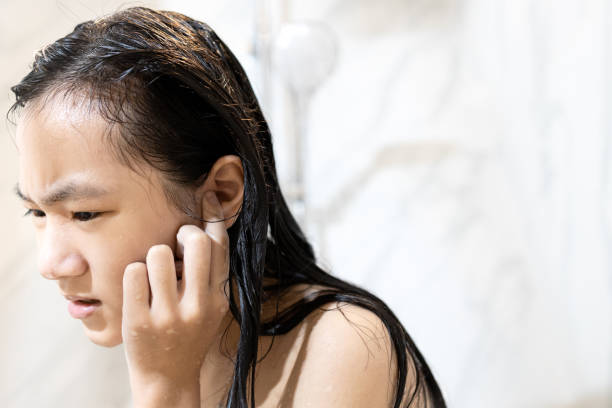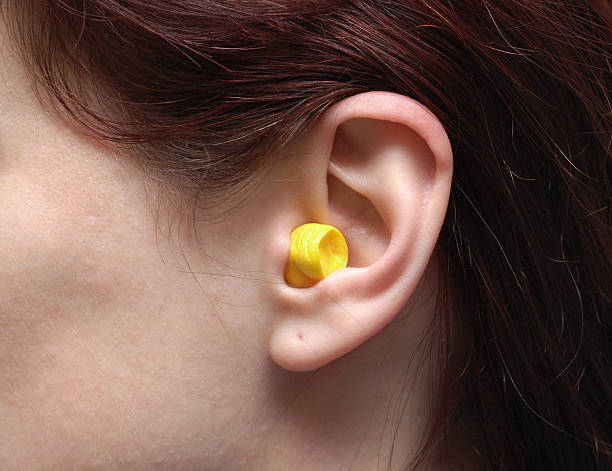Summer is the season of swimming and diving in the seas, lakes and rivers. Even those who have been sitting at home all winter, will certainly climb into the water in the summer. And if some swim gently, without unnecessary splashes and splashes, then others lead an active underwater life. And this is fraught with water getting into the ear. Normally, the fluid itself flows out of the ear cavity, but this moment should be carefully monitored. After all, if the water remains in the ear, the development of the so-called summer otitis media is possible. And this disease can ruin the whole summer vacation. Trickyperks has found out simple and safe ways of how to get water out of your ear.
Water in the ear is the cause of summer otitis
It would seem that water and water will dry up! But, as a rule, we are not talking about sterile water, but about liquid from natural reservoirs, where a wide variety of microorganisms live. And many of them are dangerous to humans, especially if it is a popular swimming area.
The pools are considered the cleanest – they are regularly cleaned, the water is chlorinated or ozonated, and the required pH level is maintained, providing visitors with maximum safety. The highest level of bacterial threat is observed in reservoirs with stagnant water – ponds and lakes.
Infection in the ear greatly increases the risk of developing swimmer’s ear.
Swimmer’s ear, or summertime otitis media , is a long-term type of otitis externa. With the constant ingress of water into the ear and attempts to clean the ear cavity with cotton swabs, damage to the skin inside the ear canal occurs. Such areas immediately occupy pathogenic bacteria from the water and cause inflammation. Summer otitis begins with itching inside the ear. Without timely treatment, itching develops into pain , a clear yellowish liquid begins to stand out from the ear, and then pus . With further progression of the disease, the lymph nodes in the neck swell, the temperature rises, the person suffers from facial and headaches.This condition is life-threatening and requires emergency medical attention.
The risk of infection also increases if the walls of the ear canal have been previously damaged, scratched or cut. People suffering from skin diseases of the ear, in particular, contact allergies, eczema, psoriasis, etc., fall into the high-risk group.
How to get water out of your ear: 6 safe ways
How to get water out of your ear? The following methods are not suitable and may even be hazardous to health in the following cases:
- if a person has a damaged eardrum, that is, there is a perforation;
- if he is sick with otitis media;
- if he has a tube for ventilation of the middle ear.
In other cases, the following methods can successfully get rid of water that has entered the ear.
Never use cotton swabs to remove water! Their use too often results in damage to the skin of the ear canal and the delicate eardrum.
1. Anatomical way
Tilt your head to your shoulder and pull your earlobe. In this case, you can shake your head from side to side. Additionally, move your lower jaw or swallow several times. This stretches the ear canal and creates the most direct path for water to flow out.
2. Vacuum method
Hold your ear firmly with your palm or finger and tilt your head to your shoulder. Press firmly into your ear with your finger, then abruptly remove it – the resulting temporary vacuum should help bring the water out. Repeat several times. The auricles are different for everyone, so you have to look for the point of maximum clogging of the ear.
3. Valsalva maneuver
This procedure got its name in honor of Antonio Valsalva, who studied the human ear. It was he who recommended this technique for removing fluid from the inner ear. During this procedure, air from the pharynx passes into the middle ear through the Eustachian tube, which connects them. This allows the pressure in the inner ear and sinuses (cavities of the skull) to equalize with the ambient pressure, which pushes water out of the outer ear.
The essence of the Valsalva maneuver: pinch your nose, close your mouth, close your vocal cords, tilt your water-filled ear to your shoulder and exhale. A pop indicates that the “purge” was successful. It is not recommended to exhale too much – there is a risk of damage to the eardrum.
This procedure can not be performed by people suffering from acute respiratory infections. With air, an infection from the respiratory tract can get into the middle ear, which will lead to the development of otitis media. Also, the Valsalva maneuver increases blood pressure, which is harmful for people with diseases of the heart and blood vessels.
Read Also: 7 Natural Ways to Avoid Kidney Stones
4. Warm compress
Heat is another option for opening the Eustachian tubes. This method is especially relevant if a person breathed underwater and the liquid got through the throat into the middle ear. The opening of the Eustachian tubes allows it to drain into the nasopharynx.
As a compress, for example, a towel soaked in hot water can be used. It must be squeezed out and applied to the ear. Repeat the procedure 4-5 times, after which you need to lie with your ear down so that the water can flow out.
Another option for heating the Eustachian tubes is steam inhalation. Pour hot water into a bowl or large pot and breathe it in, covered with a towel on top. After 10 minutes, you should tilt your head towards the flooded ear or lie down and wait for the water to drain.
5. Drying with a hair dryer
To dry the remaining water, you can use a regular hair dryer. In this case, set the temperature to a minimum and keep the unit at a distance of about 30 cm from the ear. It is strongly not recommended to switch the hair dryer to air heating – the ear has delicate skin and an extremely sensitive eardrum. When using warm air, there is a high risk of damage to them.
6. Chemical method
If other methods do not help, you can get rid of the water chemically. To do this, mix bite and alcohol in proportions of 1: 1. Alcohol accelerates the evaporation of the liquid, and the bite blocks the reproduction of pathogenic bacteria. 3-4 drops of the resulting liquid should be dropped into the ear with a sterile pipette. After 2-3 minutes, you should tilt your head so that excess fluid flows out. At the same time, ear wax dissolves, which can retain moisture in the ear canal.
How to choose earplugs for the pool?
It is best, of course, not to allow water to enter the ears at all. For this, there are special earplugs for the pool (or for swimming). You can not use other types of plugs to protect your ears from water, that is, earplugs for sleeping are categorically not suitable for this purpose.
Modern earplugs are made from silicone. It’s quite difficult to immediately guess with the model and sizes – you may have to try several options. There are the following models:
Earplugs – “fungi”.
They have the shape of a mushroom, that is, a leg and a hat, which blocks the access of water to the ear. Adherents of this model claim that the bell-shaped plug conducts sounds well and allows you to hear the coach’s commands.
Earplugs – “arrows”.
The stem of these earplugs is thinner than that of the “mushrooms”, and the head is made in the form of a spiral of soft silicone. This allows it to take the shape of the ear and reliably protect it from water.
Earplugs – “balls”.
They are considered the most comfortable type of earplugs. “Bubbles” fit almost any ear. To get them, you need to press on the hole under the ear – the “balls” themselves will pop out of the ear canal. And this is their only inconvenience – after all, the tails of the “fungi” and “arrows” are more familiar.
“Ergo” – earplugs.
The shape is closer to the “fungi”, but they also have a cuff on the leg, which provides additional protection against water. The leg of these earplugs is hollow, which also contributes to the transmission of sound.
The cost of earplugs does not depend on the model, but on the manufacturer, and can range from 150 to 600-700 rubles per pair.
To insert the earplugs, you need to pull on the earlobe, the auditory canal will open – and you can gently screw the object into your ear. To remove the earplugs from your ears after swimming, just pull them by the tail or, as in the case of balls, press the hollow under the ear.
You’re all caught up! How to get water out of your ear? You have read all the six easy ways to get water out of your hair. These ways are safe and simple. I hope this guide from Trickyperks will help you a lot.
Read More From Editor’s Section:
Essential Features of the DrChrono EHR Platform
Top 5 pulmonologist Doctor in Jaipur
The Extensive Services of Urgent Care Clinic in Lewis Center, Ohio



